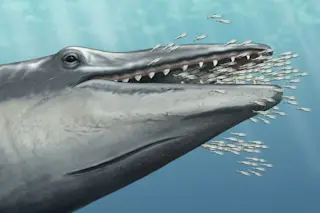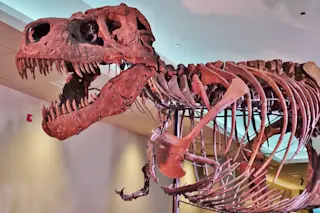Alfred the Aetiocetid. (Credit: Carl Buell) Whales are some of largest animals to ever exist on Earth, and they have an incredible evolutionary history. Modern species can be divided into two major groups depending on their feeding style: the toothed carnivores, such as the killer whale, and those such as the blue whale that use comb-like ‘baleen’ to filter enormous amounts of plankton from seawater. Baleen is formed from a series of plates made from keratin that hang suspended from the upper jaw, and provide a distinct filtering system to that of teeth. When this dietary divide occurred in their evolutionary story has long eluded scientists, even from the time of Charles Darwin, due to an incomplete whale fossil record. That is, until now. A team of researchers from Victoria Museum and Monash University on Tuesday unveiled an extraordinary 25-million-year-old primitive whale fossil that reveals clues about the ancient transition ...
Found: A Missing Link in Whale Evolution
Explore the intriguing evolutionary history of whales, revealing the ancient transition between teeth and baleen feeding types.
More on Discover
Stay Curious
SubscribeTo The Magazine
Save up to 40% off the cover price when you subscribe to Discover magazine.
Subscribe













